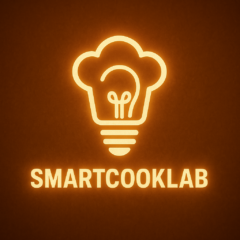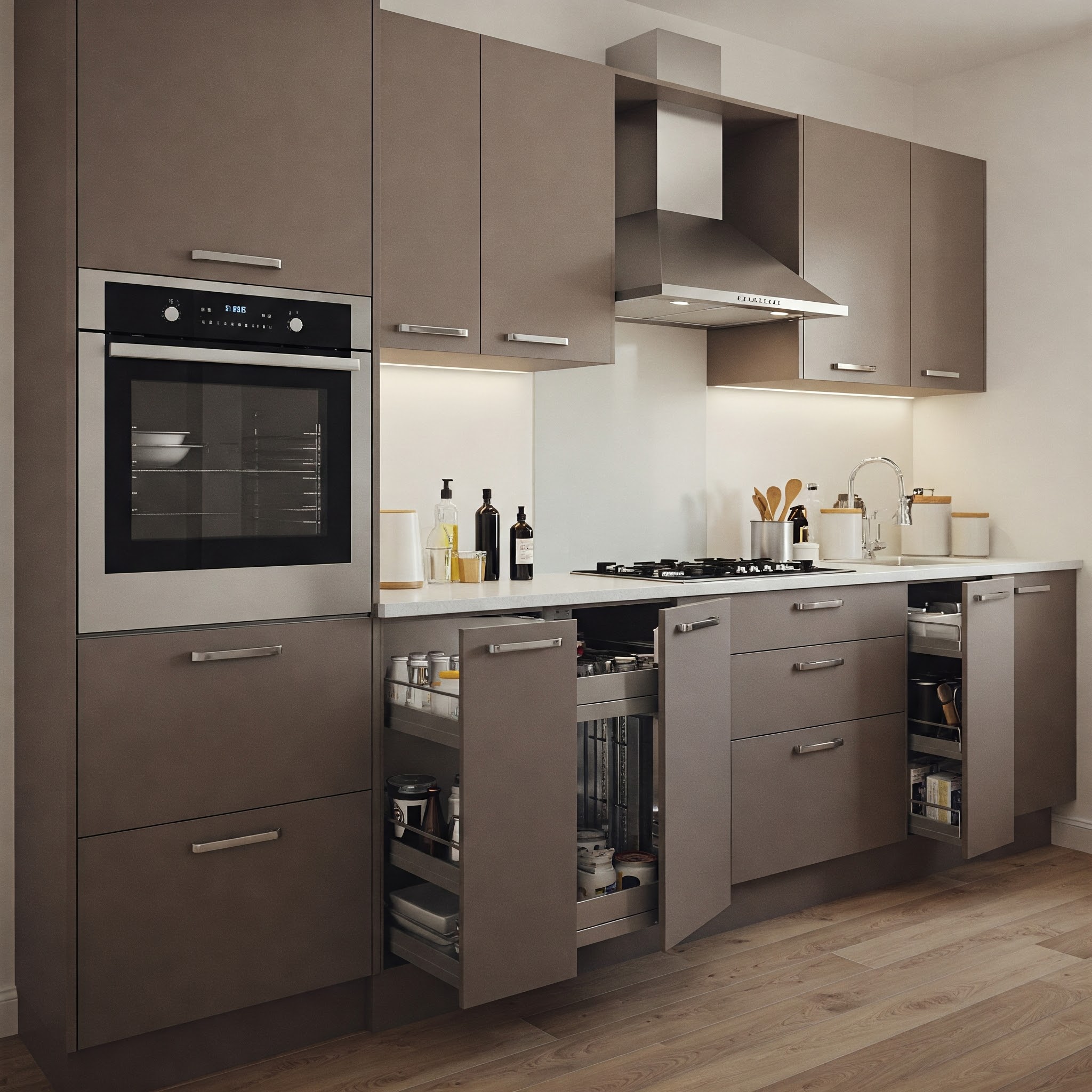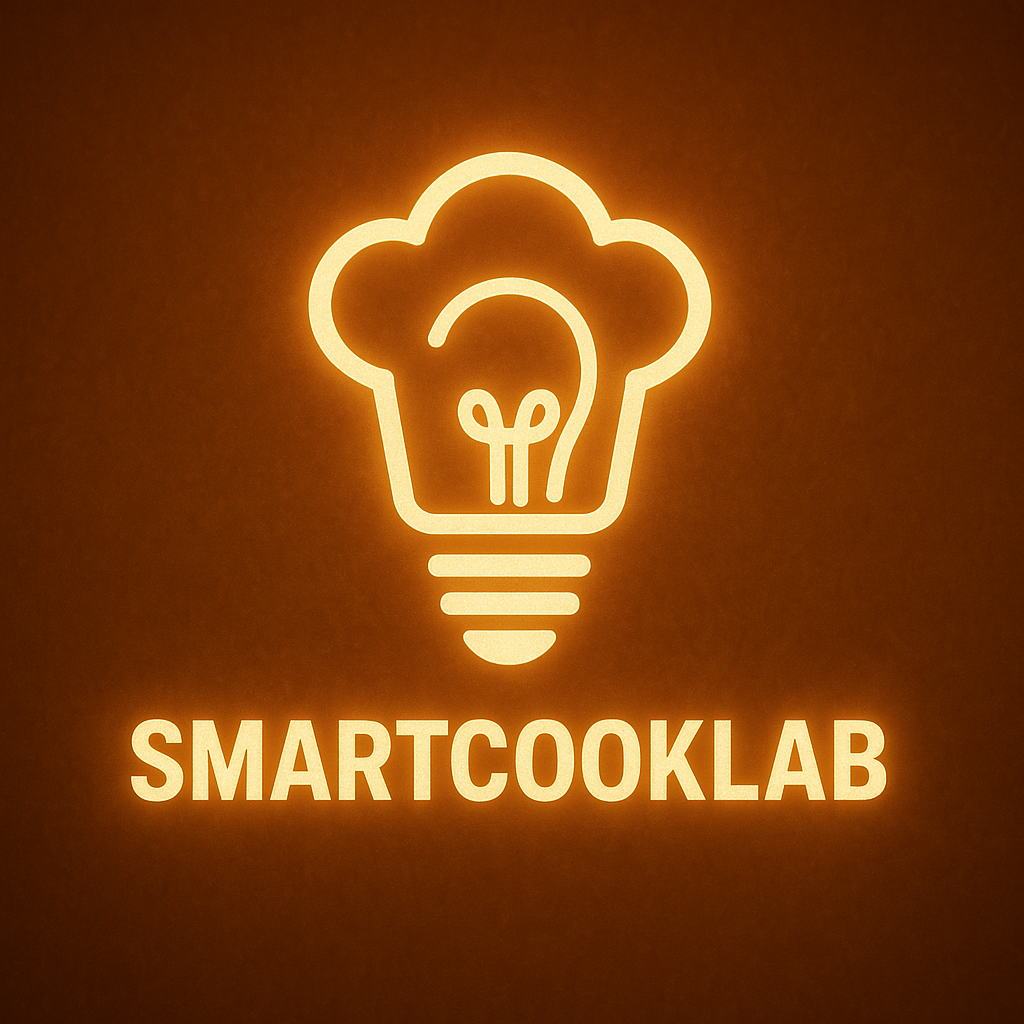Are you tired of your outdated kitchen holding back your culinary creativity? I’ve been there too. After spending years working with various kitchen setups, I’ve discovered that having the right fuel kitchen setup can make all the difference between a frustrating cooking experience and a joyful one.
When I first heard about the concept of a fuel kitchen, I was immediately intrigued by how it could potentially transform my cooking routine. As someone who loves experimenting with different cuisines and cooking techniques, finding ways to make my kitchen more efficient has always been a priority.
In this comprehensive guide, I’ll walk you through everything you need to know about fuel kitchen systems, from the latest innovations to practical tips for implementation. Whether you’re a professional chef or a passionate home cook, this article will help you understand how the right fuel kitchen setup can elevate your culinary game.
What Exactly Is a Fuel Kitchen? 🔥
A fuel kitchen refers to a kitchen setup that’s designed to maximize energy efficiency and cooking performance through optimized fuel use. This concept encompasses everything from the types of cooking appliances you use to how they’re powered and arranged to create the most functional cooking space.
The term “fuel kitchen” has evolved to include various aspects of kitchen design that focus on:
- Energy-efficient cooking appliances
- Sustainable fuel sources
- Optimized kitchen layouts that minimize movement and maximize productivity
- Cooking tools and technologies that enhance fuel efficiency
- Integrated systems that work together seamlessly
Unlike traditional kitchens that might have developed haphazardly over time, a fuel kitchen is purposefully designed with efficiency in mind. This approach not only saves energy and reduces your carbon footprint but also makes cooking more enjoyable and productive.
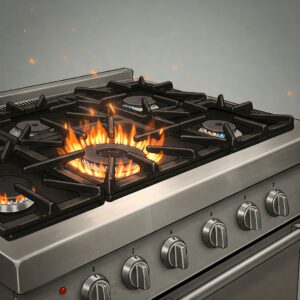
Why Your Home Needs a Fuel Kitchen Upgrade ⚡
Converting your current setup into a proper fuel kitchen comes with numerous benefits that extend beyond just cooking. Here are some compelling reasons why this upgrade is worth considering:
Energy Efficiency and Cost Savings
A well-designed fuel kitchen can significantly reduce your energy consumption. By using appliances and cooking methods that maximize fuel efficiency, you can lower your utility bills while still achieving excellent cooking results. In fact, studies have shown that energy-efficient kitchen appliances can reduce energy usage by up to 30% compared to standard models.
According to the U.S. Department of Energy, kitchen appliances account for a substantial portion of home energy use. Upgrading to more efficient models can lead to significant savings over time.
Enhanced Cooking Performance
One of the most immediate benefits you’ll notice from a fuel kitchen upgrade is improved cooking performance. Properly designed fuel systems provide more consistent heat, better temperature control, and faster cooking times.
I remember when I switched from my old electric stove to a high-efficiency gas range with precise control – the difference in my cooking results was night and day. Suddenly, I could sear steaks perfectly and simmer delicate sauces without constant adjustment.
Environmental Impact
In today’s climate-conscious world, reducing your carbon footprint is more important than ever. A fuel kitchen helps you cook more sustainably by:
- Minimizing energy waste
- Utilizing cleaner fuel sources
- Reducing cooking times
- Supporting more efficient food preparation
The Environmental Protection Agency notes that kitchen appliances that meet ENERGY STAR requirements contribute significantly to reducing greenhouse gas emissions.
Improved Kitchen Safety
Modern fuel kitchen designs incorporate advanced safety features that reduce the risk of accidents. From automatic shutoff systems to improved ventilation, these upgrades make your kitchen a safer place to cook and gather.
Top 10 Fuel Kitchen Innovations Transforming Home Cooking 🚀
Now that we understand the importance of a fuel kitchen, let’s explore the top innovations that are revolutionizing how we cook at home:
1. Induction Cooktops: The Future of Fuel Efficiency
Induction cooking represents one of the most significant advances in fuel kitchen technology. Unlike traditional gas or electric stoves that lose heat to the surrounding air, induction cooktops heat the cookware directly through electromagnetic fields.
The Mueller RapidTherm Induction Cooktop offers precise temperature control with 15 preset cooking levels, making it perfect for everything from delicate simmering to high-heat searing. Its energy efficiency is remarkable, using up to 70% less energy than conventional cooktops while heating up to 50% faster.
Benefits of induction cooking include:
- Nearly instant heating and cooling
- Precise temperature control
- Up to 90% energy efficiency (compared to 55% for gas)
- Safer cooking surface that doesn’t get hot
- Easier cleanup due to flat surface
According to Stanford University research, induction cooking also eliminates indoor air pollution associated with gas stoves, making it a healthier option for your home.
2. Smart Gas Ranges: Traditional Fuel with Modern Intelligence
For those who prefer cooking with gas but want to maximize efficiency, smart gas ranges offer the perfect solution. These appliances combine the responsive control of gas with intelligent features that optimize fuel consumption.
The GE Profile Smart Slide-In Gas Range integrates with smart home systems and features precision burners that reduce gas usage while maintaining excellent cooking performance. Its air fry technology also eliminates the need for a separate appliance, saving both space and energy.
Smart gas ranges typically include:
- Precise flame control technologies
- Built-in temperature monitoring
- Automatic ignition systems that prevent gas waste
- Integration with smart home systems
- Energy usage tracking
3. Energy-Efficient Convection Ovens
Convection technology has transformed how we use ovens in a fuel kitchen. By circulating hot air throughout the oven cavity, convection ovens cook food up to 25% faster than conventional ovens, using less energy in the process.
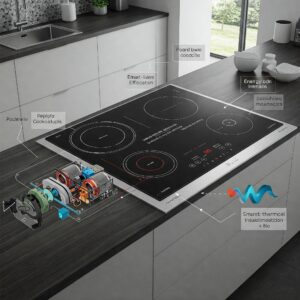
The Breville Smart Oven Air Fryer Pro combines convection technology with multiple cooking functions, allowing you to air fry, roast, bake, and broil with exceptional efficiency. Its precision temperature control ensures optimal cooking with minimal energy waste.
Key advantages of convection ovens include:
- Faster cooking times
- More even cooking results
- Lower cooking temperatures required
- Energy savings up to 20%
- Multi-function capabilities
4. Sous Vide Cooking Systems: Precision with Minimal Energy
Sous vide cooking has gained popularity not just for its precision but also for its remarkable energy efficiency. These systems use minimal electricity to maintain a precise water temperature, resulting in perfectly cooked food with very little fuel consumption.
The Anova Culinary Sous Vide Precision Cooker uses just 1000 watts to heat water initially, then drops to around 5-10 watts to maintain temperature—less than a standard light bulb. This makes it one of the most energy-efficient cooking methods available for a fuel kitchen.
Sous vide cooking offers:
- Unparalleled temperature precision
- Minimal energy usage during long cooking times
- Perfect results without constant monitoring
- Reduction in food waste due to overcooking
- Lower peak energy demand compared to conventional ovens
5. High-Efficiency Range Hoods and Ventilation
Proper ventilation is a crucial but often overlooked component of a fuel kitchen. Modern range hoods not only remove cooking odors but also improve air quality and can even recover heat energy.
The COSMO COS-668AS750 Wall Mount Range Hood features energy-efficient LED lighting and a powerful yet quiet motor that effectively removes cooking byproducts. Its permanent filters can be cleaned rather than replaced, reducing waste.
Advanced ventilation systems offer:
- Improved indoor air quality
- Reduced humidity and cooking odors
- Energy-efficient operation with smart sensors
- Heat recovery systems in premium models
- Quieter operation than older models
The American Lung Association emphasizes the importance of proper kitchen ventilation for maintaining healthy indoor air quality.
6. Programmable Pressure Cookers: Speed and Efficiency Combined
Pressure cookers have experienced a renaissance thanks to programmable models that combine speed, versatility, and remarkable energy efficiency. These appliances use significantly less energy than conventional cooking methods while producing excellent results.
The Instant Pot Duo Plus has revolutionized home cooking with its ability to pressure cook, slow cook, sauté, and more—all with exceptional energy efficiency. It uses up to 70% less energy than traditional cooking methods while reducing cooking times by up to 70%.
Advantages of modern pressure cookers include:
- Dramatically reduced cooking times
- Lower energy consumption
- Food retention of more nutrients
- Less heat released into your kitchen
- Versatility across multiple cooking functions
7. Smart Refrigeration Systems
Refrigeration typically accounts for a significant portion of kitchen energy usage. Smart refrigeration systems incorporate advanced technologies to maintain optimal temperatures while minimizing energy consumption.

The Samsung Family Hub Refrigerator uses digital inverter technology that adjusts cooling power based on demand, resulting in up to 20% energy savings. Its smart features also help reduce food waste by tracking expiration dates and suggesting recipes for ingredients you already have.
Modern refrigeration innovations include:
- Variable speed compressors that adjust to demand
- Improved insulation materials
- Smart temperature zones for different foods
- Door-in-door access to reduce cold air loss
- AI-powered energy optimization
8. Water-Efficient Dishwashers
Dishwashers might not seem like part of a fuel kitchen concept, but modern models save not just water but also the energy needed to heat that water. This makes them an essential component of an energy-efficient kitchen.
The Bosch 800 Series Dishwasher uses just 2.9 gallons of water per cycle while still delivering exceptional cleaning performance. Its CrystalDry technology converts moisture to heat for superior drying without additional energy usage.
Energy-efficient dishwashers offer:
- Dramatic water savings compared to hand washing
- Reduced energy for water heating
- Sensor technology that adjusts cycle length and water use
- Better cleaning performance with less resource consumption
- Quiet operation that doesn’t disrupt your household
According to ENERGY STAR, certified dishwashers use less than half the energy and save 3,870 gallons of water over their lifetime compared to hand washing.
9. Integrated Kitchen Systems
The concept of integrated kitchen systems takes the fuel kitchen to the next level by ensuring all components work together for maximum efficiency. These systems coordinate appliances, ventilation, lighting, and more to minimize energy waste.
The Thermador Connected Experience allows various kitchen appliances to communicate with each other, optimizing energy usage and cooking performance. For example, the range hood can automatically adjust based on what’s cooking on the stovetop below.
Benefits of integrated systems include:
- Optimized energy usage across all appliances
- Coordinated cooking processes
- Smart monitoring of energy consumption
- Predictive maintenance to prevent inefficient operation
- Simplified user interfaces
10. Solar-Powered Kitchen Appliances
For the ultimate fuel kitchen, solar-powered appliances represent the frontier of sustainability. These innovative products harness solar energy to power cooking and food preservation.
The GoSun Fusion Solar Oven combines solar power with electrical backup, allowing you to cook in any conditions while minimizing conventional energy use. It can reach temperatures up to 550°F using only sunlight.
Solar kitchen innovations offer:
- Zero-emission cooking options
- Independence from grid electricity
- Reduced utility costs
- Resilience during power outages
- Lightweight, portable options for outdoor cooking
Comparing Top Fuel Kitchen Appliances: Which Is Right For You?
When building your fuel kitchen, choosing the right appliances is crucial. Here’s a comparison of some top options across different categories:
| Appliance Type | Product | Energy Efficiency | Price Range | Best For |
|---|---|---|---|---|
| Induction Cooktop | Mueller RapidTherm | ★★★★★ | $$ | Precise cooking, small spaces |
| Gas Range | GE Profile Smart | ★★★★☆ | $$$$ | Traditional cooking with modern features |
| Convection Oven | Breville Smart Oven Air Fryer Pro | ★★★★☆ | $$$ | Versatile cooking in smaller kitchens |
| Pressure Cooker | Instant Pot Duo Plus | ★★★★★ | $$ | Fast, efficient everyday cooking |
| Refrigerator | Samsung Family Hub | ★★★★☆ | $$$$ | Smart food management, families |
🔥 Transform Your Kitchen Today! 🔥
–> Ready to revolutionize your cooking experience? These fuel kitchen appliances offer the perfect balance of performance and efficiency. Click on any highlighted product to check current pricing and discover how these innovations can elevate your culinary adventures while lowering your energy bills!
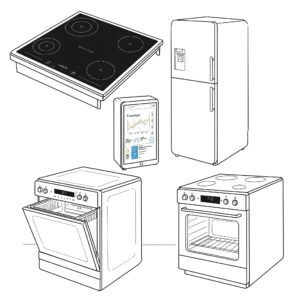
How to Design Your Ideal Fuel Kitchen Layout 📐
Beyond individual appliances, the layout of your fuel kitchen plays a crucial role in maximizing efficiency. Here are some design principles to consider:
The Work Triangle Concept
The classic kitchen work triangle (connecting the refrigerator, stove, and sink) remains relevant for fuel kitchens but with a modern twist. For optimal energy efficiency:
- Place your refrigerator away from heat sources like ovens and direct sunlight
- Position your cooking appliances near your ventilation system
- Arrange your most-used appliances to minimize unnecessary movement
According to Kitchen & Bath Design News, an optimized work triangle can reduce unnecessary movement by up to 30%, saving both time and energy during cooking.
Zoning for Efficiency
Modern fuel kitchens often use a zoning approach that groups related activities:
- Preparation zone with efficient cutting tools and waste management
- Cooking zone with optimized appliance placement
- Cleaning zone designed for water and energy conservation
- Storage zone with temperature-appropriate options for different foods
Maximizing Natural Light
Incorporating natural light reduces the need for artificial lighting during daytime cooking. Consider:
- Strategically placed windows that don’t compromise insulation
- Skylights in appropriate locations
- Light-colored surfaces that reflect natural light
- Energy-efficient window treatments that prevent heat loss/gain
Smart Storage Solutions
Efficient storage is key to a well-functioning fuel kitchen:
- Place frequently used items at easy-to-reach heights
- Use deep drawers instead of lower cabinets for better accessibility
- Install pull-out systems that bring items to you, reducing energy spent searching
- Consider transparent containers to easily see contents without opening
Fuel Sources: Comparing Options for Your Kitchen 🔋
The fuel source you choose for your kitchen has a significant impact on both performance and sustainability. Let’s compare the most common options:
Natural Gas
Natural gas remains a popular choice for cooking due to its responsive heat control and reliability.
Pros:
- Instant heat adjustment
- Continues working during power outages
- Lower operating cost than electricity in many areas
Cons:
- Contributes to indoor air pollution
- Fossil fuel with environmental impact
- Requires proper ventilation
Electricity
Standard electric cooking has evolved significantly in recent years:
Pros:
- No indoor combustion emissions
- Can be sourced from renewable energy
- Safer without open flames
Cons:
- Typically less responsive than gas
- Higher operating costs in some regions
- Dependent on grid reliability
Induction (Advanced Electric)
As mentioned earlier, induction represents the most efficient form of electric cooking:
Pros:
- Most energy-efficient cooking method
- Fastest heating technology
- Safest option with cool-to-touch surface
- Precise temperature control
Cons:
- Requires compatible cookware
- Higher initial investment
- Learning curve for new users
Propane
For areas without natural gas lines, propane offers an alternative:
Pros:
- Similar cooking experience to natural gas
- Available in areas without gas service
- Portable options for outdoor cooking
Cons:
- Must monitor tank levels
- Higher cost than natural gas
- Storage considerations
The U.S. Energy Information Administration provides comparative data on energy sources that can help you evaluate which option makes the most sense for your specific situation.
Sustainable Cooking Practices for Your Fuel Kitchen 🌱
Beyond the appliances and design, how you use your fuel kitchen significantly impacts its efficiency. Here are some sustainable cooking practices to implement:
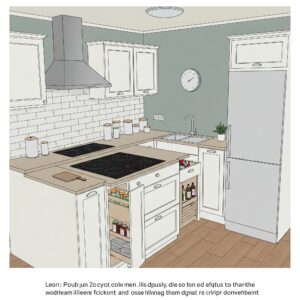
Batch Cooking
Preparing multiple meals at once maximizes the energy used to heat your oven or stovetop:
- Plan a weekly “power cooking” session
- Prepare base ingredients for multiple meals
- Use multiple oven racks when baking
- Store properly to maintain food safety and quality
Right-Sizing Your Cookware
Using appropriately sized pots and pans for each cooking task saves energy:
- Match pot size to burner size
- Use lids to trap heat
- Choose cookware with good heat conductivity
- Select the smallest suitable cooking vessel for each task
Passive Cooking Techniques
Take advantage of residual heat to complete cooking without additional energy:
- Turn off electric burners a few minutes before cooking is complete
- Use retained heat in ovens for gentle finishing
- Try haybox or insulated cooking for long-simmering dishes
- Pre-soak beans and grains to reduce cooking time
Mindful Appliance Usage
Be strategic about which appliances you use for different tasks:
- Use pressure cookers for foods with long cooking times
- Choose microwave over oven for small portions
- Opt for toaster ovens instead of full-sized ovens when possible
- Combine cooking functions (e.g., steam vegetables while boiling pasta)
Integrating Smart Technology into Your Fuel Kitchen 📱
Smart technology can take your fuel kitchen’s efficiency to the next level:
Energy Monitoring Systems
These systems provide real-time data on your kitchen’s energy consumption:
- Track usage patterns to identify opportunities for savings
- Set goals and receive alerts when exceeding normal usage
- Identify appliances that may need maintenance or replacement
- Compare your usage to similar households
The Sense Energy Monitor can identify individual appliances in your home and provide detailed information about their energy consumption, helping you make smarter decisions about when and how to use them.
Voice-Controlled Assistants
Voice assistants can enhance your cooking experience while promoting efficiency:
- Set timers without touching anything with messy hands
- Convert measurements hands-free
- Control compatible appliances by voice
- Access recipes without handling print materials or devices
Smart Plugs and Switches
Even conventional appliances can become part of your smart fuel kitchen:
- Automatically turn off energy-wasting appliances
- Schedule appliance usage during off-peak energy hours
- Control devices remotely via smartphone
- Integrate with energy monitoring systems
The Kasa Smart Plug allows you to control non-smart appliances remotely and monitor their energy usage, adding a layer of efficiency to your existing kitchen setup.
Cost-Benefit Analysis: Is a Fuel Kitchen Worth the Investment? 💰
Upgrading to a fuel kitchen requires an initial investment, but the long-term savings can be substantial:
Initial Costs
Depending on your current setup and desired changes, initial costs might include:
- New energy-efficient appliances
- Possible electrical or gas line modifications
- Smart home integration components
- Professional installation if needed
Long-Term Savings
These expenses are offset by various savings:
- Reduced monthly utility bills
- Lower maintenance costs for modern appliances
- Decreased food waste with better storage and cooking methods
- Potential tax incentives for energy-efficient upgrades
Return on Investment Timeline
Based on average energy savings, most fuel kitchen upgrades pay for themselves within:
- 3-5 years for major appliance upgrades
- 1-2 years for smaller efficiency improvements
- 5-7 years for complete kitchen renovations
According to Consumer Reports, energy-efficient kitchen appliances can save the average household hundreds of dollars annually in utility costs.
🔥 Ready to Maximize Your Kitchen’s Potential? 🔥
–> Don’t wait to start saving on your energy bills! Investing in fuel kitchen technologies pays dividends in both cooking performance and long-term savings. Click any product link to see current prices and take the first step toward a more efficient, enjoyable cooking experience! 🍳🔥
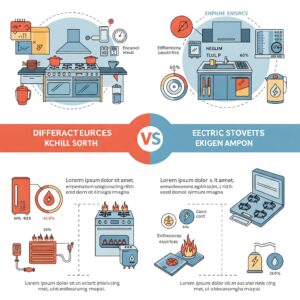
Real-Life Fuel Kitchen Success Stories 🌟
To illustrate the impact of fuel kitchen upgrades, here are some real-life examples:
The Urban Apartment Transformation
Sarah, a young professional in Chicago, transformed her small apartment kitchen with:
- A portable induction cooktop
- A combination convection/microwave oven
- A compact energy-efficient refrigerator
Results: Her utility bills decreased by 25%, and she discovered she actually enjoyed cooking in her newly efficient space.
The Suburban Family Upgrade
The Martinez family renovated their outdated kitchen with:
- A smart dual-fuel range
- An ENERGY STAR refrigerator
- A high-efficiency dishwasher
- Solar panels to offset electricity usage
Results: Despite their busy lifestyle with three children, they reduced their energy consumption by 40% while enjoying more home-cooked meals.
The Rural Homestead Kitchen
James and Emily created a nearly self-sufficient fuel kitchen on their rural property using:
- Solar ovens for daytime cooking
- A high-efficiency wood cookstove for winter
- A propane backup system for cloudy days
- Passive solar design for natural lighting
Results: They reduced their dependence on delivered propane by 80% while maintaining all the functionality of a modern kitchen.
Common Mistakes to Avoid When Creating Your Fuel Kitchen ❌
Even with the best intentions, certain pitfalls can undermine your fuel kitchen’s efficiency:
Overlooking Insulation
Poor insulation can negate the benefits of efficient appliances:
- Ensure adequate insulation in walls and ceilings
- Address drafty windows near cooking areas
- Consider insulated cookware for energy-efficient cooking
Ignoring Maintenance
Regular maintenance is essential for optimal performance:
- Clean refrigerator coils quarterly
- Descale water-using appliances as recommended
- Replace filters in range hoods and water systems
- Check seals on refrigerators and ovens
Choosing Efficiency Without Considering Usage Patterns
The most efficient appliance isn’t always the right choice if it doesn’t match your cooking style:
- Consider how you actually cook, not just efficiency ratings
- Balance automation with your preferred level of control
- Look for adaptability to different cooking methods
- Test appliances before committing when possible
Failing to Educate Household Members
The most efficient kitchen loses effectiveness if not everyone knows how to use it properly:
- Create simple guidelines for optimal appliance use
- Label controls if needed for clarity
- Demonstrate energy-saving techniques
- Encourage everyone to participate in efficient practices
The Future of Fuel Kitchens: What’s Next? 🚀
The concept of the fuel kitchen continues to evolve with emerging technologies:
Artificial Intelligence and Machine Learning
AI is revolutionizing kitchen efficiency through:
- Predictive cooking that optimizes energy use
- Learning your preferences to minimize waste
- Automatic adaptation to changing conditions
- Integrated meal planning and grocery management
Alternative Energy Integration
Beyond traditional fuel sources, kitchens are incorporating:
- Built-in solar collection and storage
- Hydrogen fuel cell technologies
- Biogas systems for rural applications
- Geothermal heat exchange for cooking and refrigeration
Zero-Waste Design Principles
The fuel kitchen of the future embraces circular economy concepts:
- Integrated composting systems
- Water recycling for appropriate applications
- Energy recovery from cooling processes
- Biodegradable and recyclable kitchen components
According to MIT Technology Review, these innovations could reduce kitchen energy consumption by up to 60% compared to current efficient models.
Conclusion: Your Path to a More Efficient Fuel Kitchen
Creating your ideal fuel kitchen doesn’t have to happen all at once. You can take a phased approach:
- Start with an energy audit to identify your biggest opportunities for improvement
- Replace failing appliances with energy-efficient models
- Implement no-cost behavior changes that reduce energy use
- Plan larger renovations around your specific cooking needs and preferences
- Stay informed about emerging technologies that might benefit your kitchen
Remember that the perfect fuel kitchen balances efficiency with enjoyment. The goal is not just to save energy but to create a space where you love to cook and gather.
By thoughtfully designing your fuel kitchen with attention to both technology and human factors, you can create a space that’s not only environmentally responsible but also a joy to use every day.
🔥 Fuel Your Culinary Passion! 🔥
➡ Ready to transform your kitchen into an efficient cooking haven? The products featured in this guide represent the best of what modern fuel kitchen technology has to offer. Click through to explore options that match your cooking style and start enjoying the benefits of a more efficient, enjoyable kitchen experience today! 🍽️✨
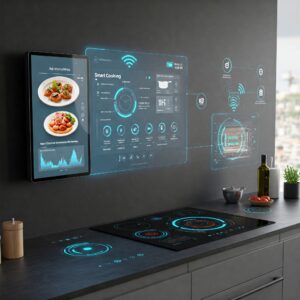
More FAQ
❓ What type of meals does Fuel Kitchen offer?
✅ Fuel Kitchen provides balanced, ready-to-eat meals focused on high protein, low sugar, and clean ingredients—ideal for fitness enthusiasts or busy professionals…
❓ Is Fuel Kitchen good for weight loss?
✅ Yes, Fuel Kitchen meals are portion-controlled and macro-friendly, making them a solid choice for those aiming to lose weight while maintaining energy…
❓ Does Fuel Kitchen deliver to your door?
✅ Fuel Kitchen offers home delivery and local pickup options, allowing you to get fresh, healthy meals without leaving your home…
❓ Are Fuel Kitchen meals customizable?
✅ Fuel Kitchen allows limited customization like protein swaps, but most meals are pre-designed for optimal nutrition and convenience…
❓ How long do Fuel Kitchen meals last?
✅ Most Fuel Kitchen meals stay fresh in the fridge for up to five days, thanks to vacuum sealing and proper storage methods…
Recommended for You:
- Kitchen Clock: 10 Stylish Timepieces to Transform Your Cooking Space
- 10 Best Non Slip Kitchen Shoes for Ultimate Safety and Comfort in 2025
- Kay Dee Designs Sweet Kitties Calendar Kitchen Towel 2025: Top 7 Reasons Cat Lovers Need This Adorable Kitchen Essential
Disclaimer: This article contains affiliate links. If you purchase products through these links, we may earn a small commission at no additional cost to you.
